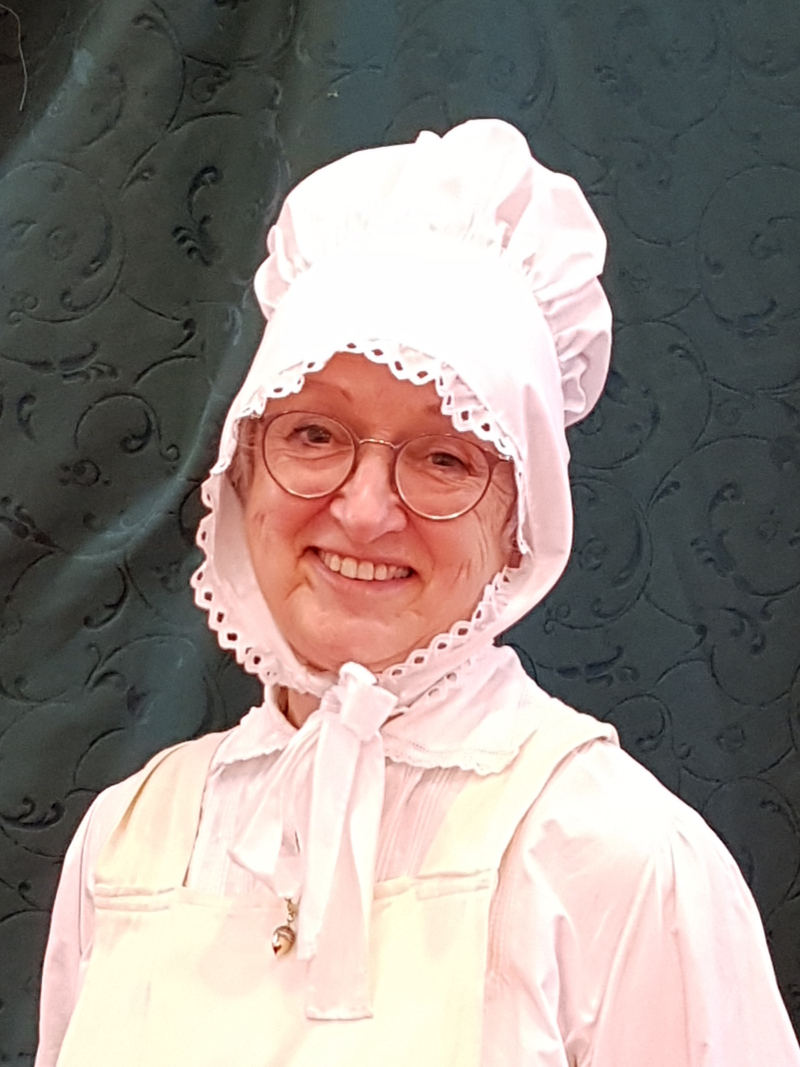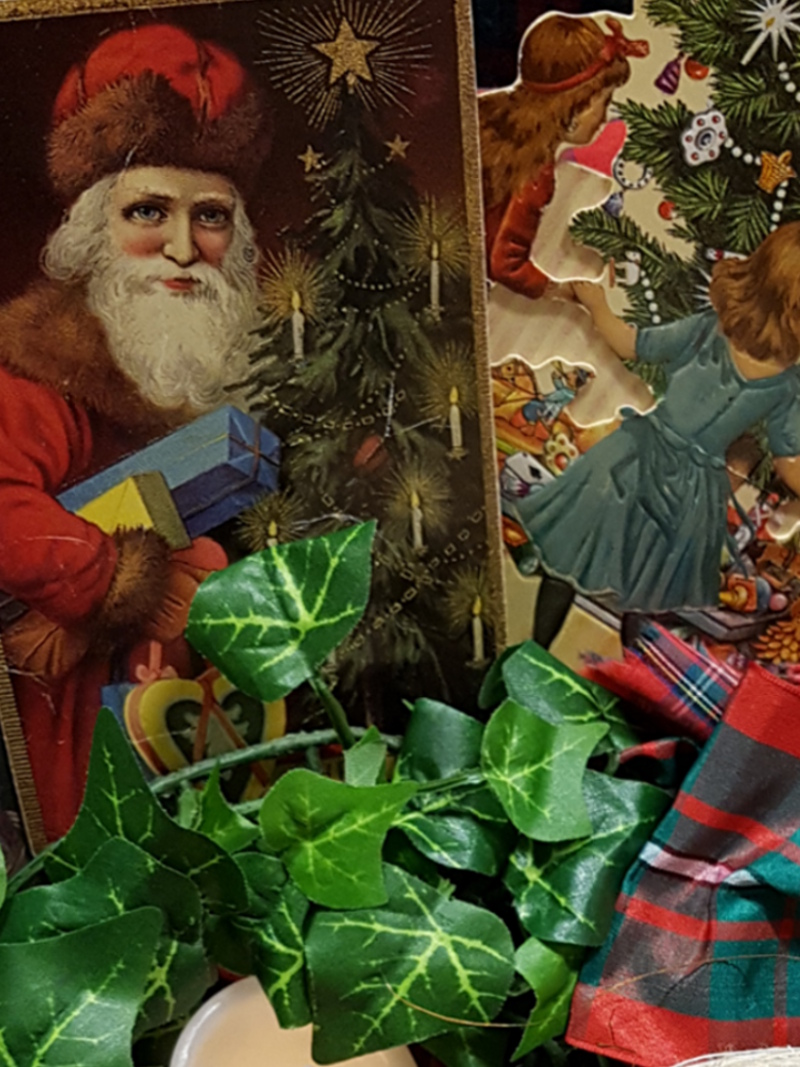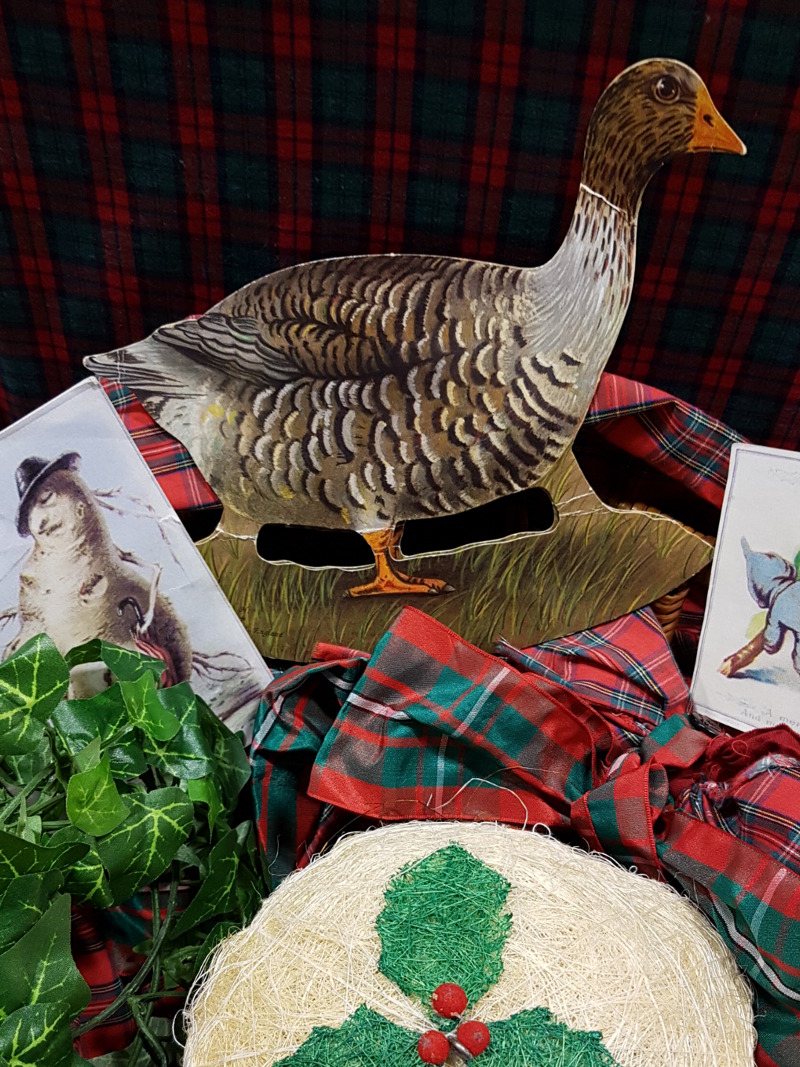Liz Coughlan delivers a range of school sessions in the museum but one of her favourites is ‘Victorian Christmas’. She has worked for Reading Museum for a long time and really enjoys being a part of the fantastic schools programme and family activities.
With the onset of Autumn, the long Summer is becoming a distant memory, the leaves are starting to fall from the tree, the nights are closing in, Halloween will come and go and the frost will soon set in. Perhaps this is too early but… it is beginning to look a lot like Christmas!
With Christmas, nearly, almost, just round the corner, Liz tells us what makes ‘Victorian Christmas’ so fun and rewarding to teach:

Liz Coughlan - Victorian Christmas
When the autumn term begins, I look forward to delivering the Victorian Christmas sessions as it’s one of my favourites. While being great fun and very lively with lots of audience participation, it also helps the children understand where many of our Christmas customs originated, and links in very well with the study of the Victorian period as many of our practices began in Victorian times.

Victorian Christmas Cards
Our room is festooned with Christmas decorations and we begin by looking at these, the meaning behind the holly, ivy and mistletoe and we discover that the practice of decorating our homes originated in pre- Christian times. The Christmas tree was, of course, a German introduction, popularised by Prince Albert, and we look at the magazine illustration that prompted this upsurge of interest. The children remove gifts from the tree and we talk about the differences between modern day gifts and those from the Victorian era. Hanging near the tree is a stocking. In turn, the children take out the gifts which prompt more discussion about gift giving and the story of St Nicholas who put gold into the stockings of three poor girls and is the origin of Santa Claus. We also look at Christmas crackers, invented by an Englishman, Tom Smith, whose crackers the Queen still enjoys at Sandringham every year, and two children pull a cracker and read out the awful joke or riddle.

Christmas Party Hats
Food, of course, plays an important part in the Christmas festivities and we look at Queen Victoria’s Christmas menu. Did you know she ate curry on Christmas day? We also look at the origins of better known dishes associated with Christmas: the chocolate log, turkey, boar and mincemeat and some of the children mime making a Christmas pudding while everybody sings the stirring song. Of course, we don’t forget Christmas cards, another Victorian introduction, and the children make their own popular Victorian version to take home with them.

Victorian Christmas Goose
The highlight of the session is definitely the panto, a peculiarly British phenomenon and a combination of the Commedia dell’ Arte and Mummers entertainment. After a short introduction the children dress up and play all the parts. There is much audience participation and the whole is delivered at breakneck speed and is very raucous, as it should be!
When this is over, we calm down before leaving by singing ‘Oh Christmas Tree’, a carol introduced by Prince Albert, and we all leave with smiles on our faces and the Christmas spirit in our hearts.





